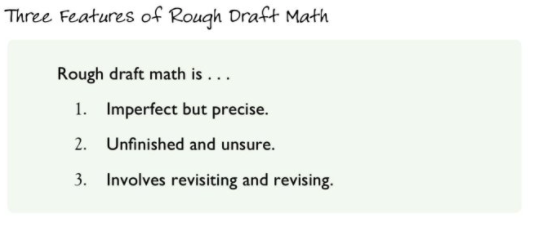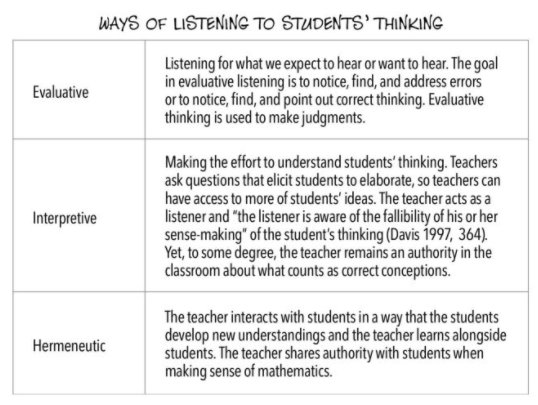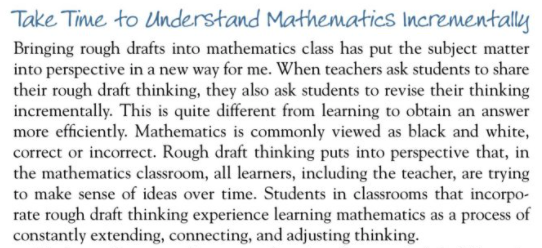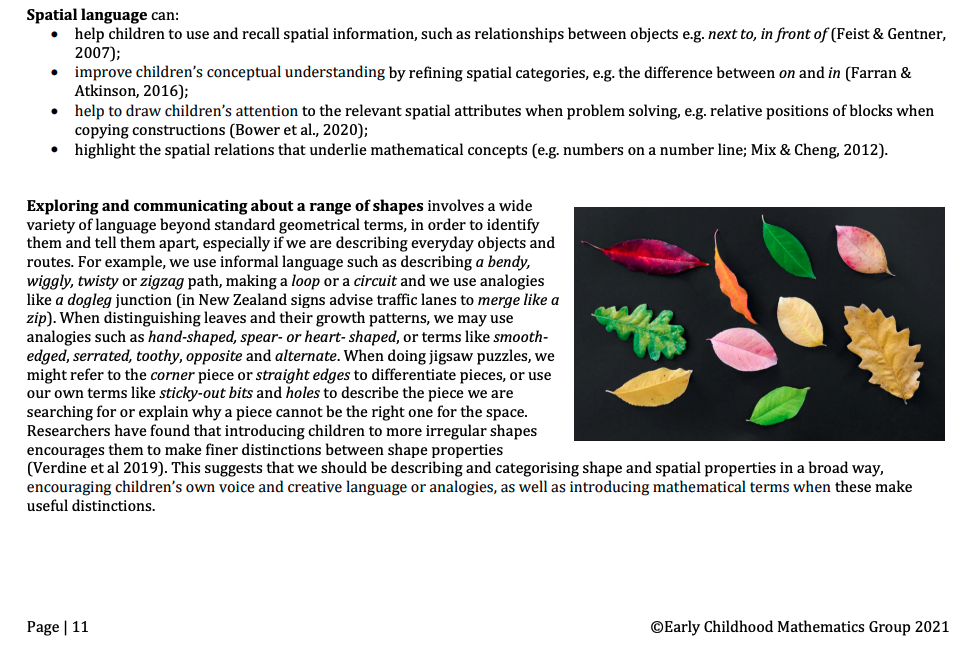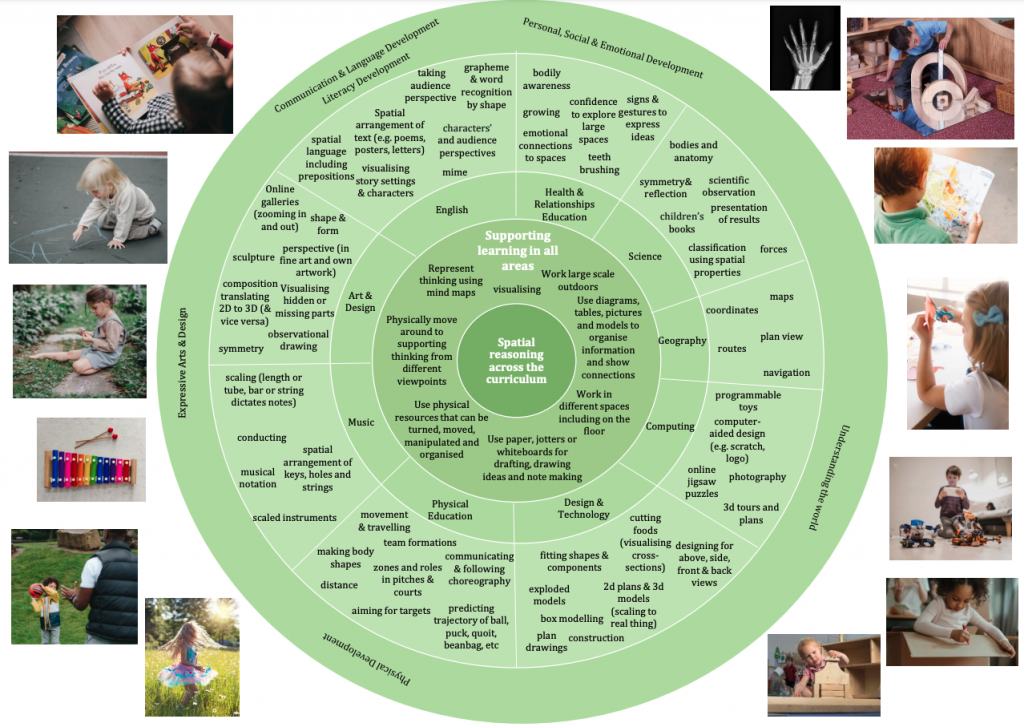With school holidays approaching in many parts of Australia, I thought it was timely to recommend some holiday reading for primary teachers of mathematics. Last year I wrote a blog titled Keeping up with the current that focused on three mathematics education research articles for teachers to explore. The current blog provides a few recent articles to assist teachers in continuing learning and building their pedagogical content knowledge (PCK). A continued focus on growth and self-learning is especially important in light of curriculum revisions and what this might mean for mathematics teaching.
As I mentioned in my previous blog, I am a member of Researchgate and also subscribe to a number of mathematics education journals. As a school, or individual teacher, one of the best ways to access recent research articles (specifically designed for classroom teachers) is by joining your state’s mathematics association. All state associations in Australia are also affiliated with AAMT (the Australian Association of Mathematics Teachers). The journal Australian Primary Mathematics Classroom is excellent and is often part of your association membership. If you’re not a member of your state’s association I highly recommend you join. The AAMT website provides links to each state association’s website.
Instructional Moves that Increase Chances of Engaging All Students in Learning Mathematics @janettebobis @sharynlivy @AnnDownton @MonashEducation @attard_c @mminas8 @Corovie @FishyKES @helenjwc @AusTeacherRiss @tobyrusso @kath_cartwright @SalkeldKathryn https://t.co/OTJSLkQMQw
— James Russo (@surfmaths) March 10, 2021
Did you know that you can read the first chapter of my forthcoming book, Rough Draft Math, @stenhousepub’s website? You can order (and preview!) the book at this link: https://t.co/YSw552CRTk
— Amanda Jansen (@MandyMathEd) March 1, 2020
It's OUT! @EChildhoodMaths developmental trajectory on spatial reasoning - released bit-by-bit here: https://t.co/2kXZTZj6Hh
— Dr. Helen J Williams 🇪🇺 (@helenjwc) May 5, 2021
Please do check it out and feed back.
We know from research how important spatial reasoning is for children's development and >>
Janette Bobis, James Russo, Ann Downton, Maggie Feng, Sharyn Livy, Melody McCormick and Peter Sullivan recently published an article titled Instructional Moves that Increase Chances of Engaging All Students in Learning Mathematics. This joint venture between the University of Sydney and Monash University explores instructional techniques to engage all students in the mathematics classroom at their level of challenge. The research focused on discussing teachers’ beliefs about mathematics and pedagogy and on using open-ended tasks with enabling and extending prompts to support differentiation in the classroom.
They drew on numerous research (see article for references to Vygotsky, Dweck, Smith and Stein) when designing the tasks to use in the research. The characteristics used (p. 3) present a nice list of features related to what quality, challenging mathematics tasks should involve, such as:
- Students did not know initially how to solve or how to proceed
- Build on what students already know
- Are open-ended in that there is more than one correct answer and/or more than one
solution pathway - Take time to solve
- Are engaging for students in that they are interested in, and see value in persisting
working on them - Are simply posed
- Focus on important aspects of mathematics, and
- Foster connections within mathematics and across domains.
Within the article Bobis et al. report on findings from their teacher survey about teacher beliefs about mathematics and instructional strategies.
“Nearly all teachers described how they believed it was important to cultivate a growth mindset in their students by emphasizing persistence on challenging tasks, the importance of struggle when learning and how mistakes can provide an opportunity for further learning” (page 11)
“Accompanying teachers’ belief in a growth mindset was their belief in the importance of knowing their students well so that they were able to adapt their instruction to cater for a diversity of students.” (page 11)
The teachers in the study were part of the Exploring Mathematics Sequences of Connected, Cumulative, and Challenging tasks project (EMC3). The project uses a Launch, Explore, Summarise model for structuring a mathematics lesson or lesson sequence (for a description of this process see pages 5 – 6 in the paper). Teachers in the study participated in professional learning and implemented open-ended tasks in their classrooms that involved the use of enabling and extending prompts to assist students in both entering the task and in extending the task.
“… our study suggests that Australian primary teachers perceive presenting the whole class with the same core problem solving task, differentiated through students accessing enabling and extending prompts, as the most effective approach for catering to students of different performance levels in the mathematics classroom.” (page 15)
Other findings from the study were that the approaches used within the EMC3 project emphasise both student agency and an active role for the teacher. Teachers found certain components critical for supporting the development of student autonomy such as; student choice over materials, strategies and methods; open-ended, low-floor, high-ceiling tasks; and allowing time for students to think about the mathematics. Teachers also employed intentional strategies to engage students such as; using prompts, contextualising the learning to help students make sense of the mathematics; providing explicit opportunities for consolidation and connections to previous learning. Another related article to this research is Sullivan, P., Bobis, J., Downton, A., Feng, M., Hughes, S., Livy, S., … & Russo, J. (2021). An instructional model to support planning and teaching student centred structured inquiry lessons. Australian Primary Mathematics Classroom, 26(1), 9-12.
The second reading I recommend is the initial chapter of Amanda Jansen’s book Rough Draft Math: Revising to learn. Amanda Jansen is a Professor in the School of Education at the University of Delaware where she teaches future elementary and middle school mathematics teachers. I follow her on Twitter and have previously written about her idea of rough draft math in a previous blog Why drafting and redrafting is important in mathematics.
Although Amanda’s book came out last year, I think her work is still recent and is very much applicable to the primary mathematics classroom where a focus on talk and student communication is essential. I do think buying the book is a great investment for your teacher reference library or personal book collection, but you can read through her first chapter for free to get a taste! The foreword provides a list of the ways using rough draft math can help teachers in positioning students as mathematically competent and supporting positive attitudes towards mathematics:
- promoting mathematical discourse
- establishing norms and routines that provide opportunities for all students to engage in the discourse
- shifting student’s views of competence from performative to participatory
- developing students’ intellectual authority
- positioning students as sense makers
- focusing on mathematical goals and conceptual understanding
- encouraging risk taking
- building active, nurturing communities in which students feel a sense of inclusion and belonging
The following three images are excerpts from Amanda’s first chapter that I think are particularly useful. The way Amanda thinks about mathematics instruction and how that needs to reflect both a student’s disposition to the subject, and how mathematical thinking develops, can really improve our teaching. She provides good advice about how to listen to students’ thinking and how to create a classroom culture where revision through thinking aloud is supported.
Lastly I thought I’d share some recent work on trajectories of spatial reasoning learning experiences shared on Twitter by Dr Helen J Williams (@helenjwc). The Early Childhood Mathematics Group (ECMG) has recently released resources to support the development of spatial reasoning. They have conducted a very thorough spatial reasoning literature review in creating their trajectories and in answering What is it and how do children learn it? The reference list includes many authors I expect to see when spatial reasoning in young children is mentioned eg Jenni Way, Tom Lowrie, Joanne Mulligan, and Clements and Sarama. The ECMG welcome feedback and comments on this recent work. It’s a really good read, you can download the whole document or look at individual sections.
The spatial reasoning document as a guide provides a comprehensive description of what spatial reasoning is, what it involves, and how it is developed based on research. The document also describes the importance of developing spatial reasoning specifically in mathematics. There is guidance for supporting children’s spatial reasoning, physical development, gesture, and language. There is also advice for families and a spatial reasoning book list. The document then provides some further explicit advice and knowledge around spatial reasoning in the mathematics curriculum linked to concepts such as; symmetry, perspective, scale, and maps.
They also share a spatial reasoning across the curriculum mapping ‘wheel’ (pictured) that provides a detailed visual of where spatial reasoning skills and thinking may be incorporated. The trajectory of early learning experiences to develop spatial reasoning itself is also on the site and I would recommend teachers reading this and thinking about how it connects to the Early Years Learning Framework, the Australian Curriculum, and NSW mathematics syllabus. I haven’t yet gone through it with a fine tooth comb myself, but I am interested to see where it confirms what we already do and where, if at any point, does it contradict or challenge our current curriculum.
